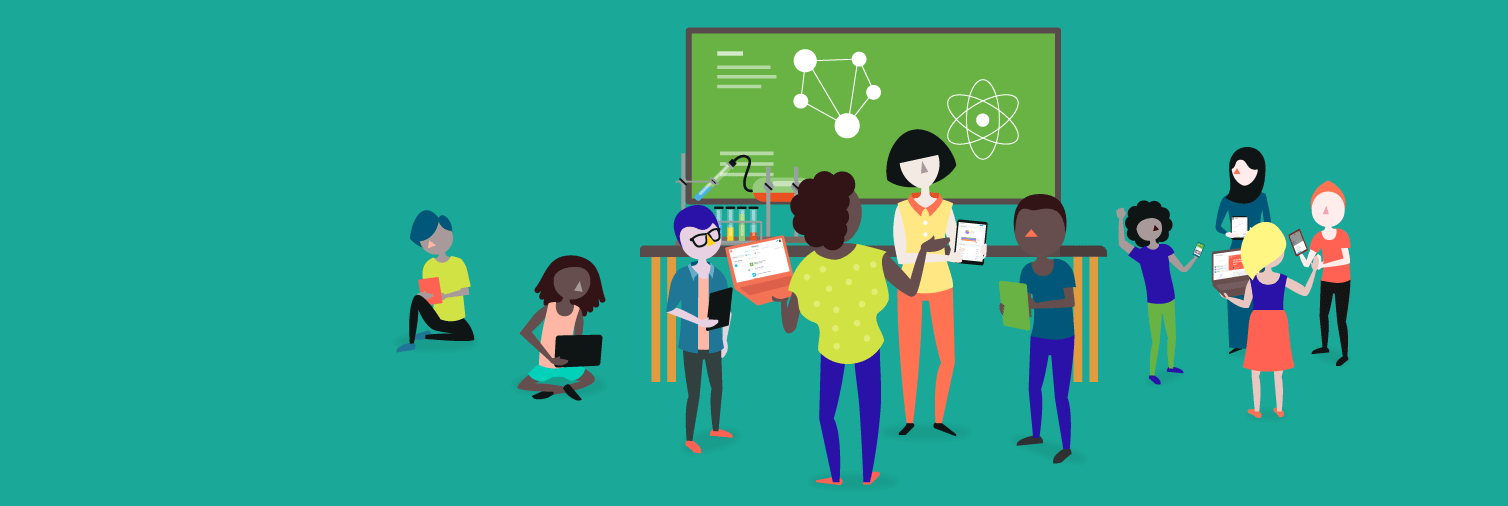
Zack Cronin
Many times, the classroom can feel like an isolated, insulated experience. In many ways, it is.
That’s for a good reason, however as students require a controlled environment for better engagement, learning, and therefore success. A focused environment increases students’ attention, promotes meaningful learning experiences, and motivates students.
When student, teacher, school, district, and even state performance is measured based on in-classroom tests taken in controlled environments on standardized tests, it’s easy to simply focus on making students better at a given material.
But, we must remember that students aren’t learning to be better test-takers. One day, these students will be in college, or out in the real world. They will be away from their controlled environments, linear lines of questioning, and standardized tests.
That is why it is crucial for teachers to incorporate real-world examples into their teachings.
The benefit is twofold – one, students become more interested and engaged when they see how their lessons apply to their daily lives. The curriculum becomes more tangible, impactful, and real. Second, it promotes critical thinking, as life is often more complex as it is presented in the classroom.
The Benefits of Real-World Examples in the Classroom
Too often, the focus of education is not the actual utilization of knowledge and material but rather a memorize and repeat model.
It is an archaic formula that stems from a time when students were required to simply sit and listen. As you likely know, this model is vastly different from modern-day higher education and working environments that instead foster collaboration, communication, and community.
Today’s teachers need to help foster that same collaboration in K-12 education to better prepare students for their futures.
When real-world examples and connections are incorporated into lessons, students understand why they are learning is useful beyond the walls of their classroom. They can see how they can use learning in real life, and how it impacts their true world.
Connecting classroom learning with real-life examples builds engagement, fosters critical thinking, and encourages outside-of-the-box ideas. It connects lessons with other subjects to create a holistic way of thinking that deviates from the one-track linear way that teaching is typically done.
How To Incorporate Real-World Examples in the Classroom
Use Current Events
By incorporating current (or recent) events into lessons as real-world examples, students can see how the ideas and curriculum are actually applied to real-world situations.
Not only does this provide benefits in the way that students build connections between the real world and the classroom, but it allows them to become more aware of cultural, social, and political perspectives they may not otherwise be exposed to.
Employ case studies
Case studies are excellent ways of illustrating not only how the curriculum is employed outside the classroom, but how it is used to make decisions, the implications, and its impacts. Case studies that include perspectives from decision-makers and those involved help bring ideas to life.
Incorporate Multimedia & Technology
Everywhere in the world, technology is used. So why not incorporate it in your classroom? You can use a platform like Kiddom to make lessons easier, or encourage students to use devices to explore topics more, find relevant ideas, and further their own understanding.
Have them bring ideas to the lessons and present them to the class, as a bonus, they can learn responsible use of devices.
Encourage Group Work
Collaboration is key to modern-day work, so it should be encouraged within the classroom as well. Use problem-based exercises and form groups to create solutions using their newfound knowledge. Studies show that students who work collaboratively with new information preserve and understand it better than when they use it in individual efforts.
Kiddom seamlessly connects the most critical aspects of teaching and learning on one platform.
For the first time, educators can share and manage digital curriculum, differentiate instruction, and assess student work in one place. Learners can take assessments online, see student performance data with the click of a button, and teachers have the insight and tools they need to create individual learning paths.
Ready to bring digital curriculum to your school or district?
Connect with us in a 15-minute meeting to learn more about available pre-packaged curriculum and assessments, and how the Kiddom education platform can support your learning community.